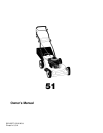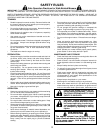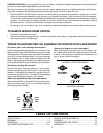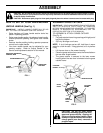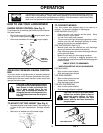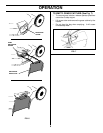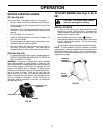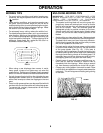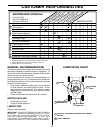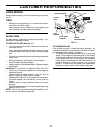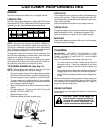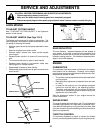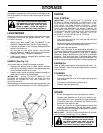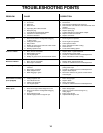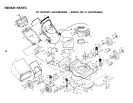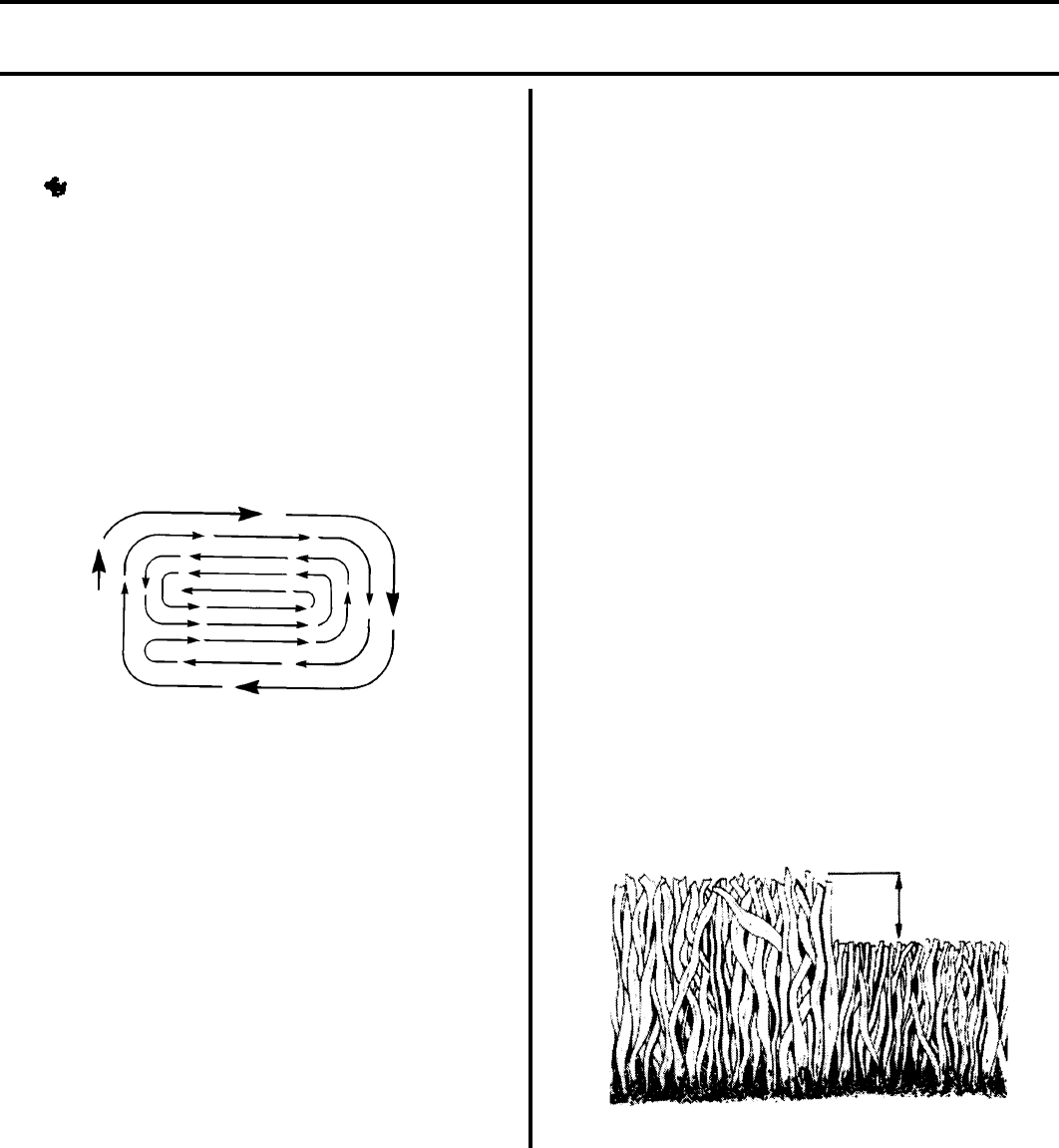
OPERATION
8
MOWING TIPS
• For most cutting conditions and better bagging per-
formance, the engine speed should be set in the fast
( ) position.
• Under certain conditions, such as when mowing very
tall grass, raise the mower height on the first cut to
reduce pushing effort, to avoid overheating the engine,
and to avoid leaving clumps of grass clippings. Make
the second cut to the desired height.
• For extremely heavy cutting, reduce the width of cut.
• For side discharge lawn mowers, cut in a counterclock-
wise direction, starting at the outside of the area to be
cut, in order to spread grass clippings more evenly and
to put less load on the engine. To keep clippings off of
walkways, flower beds, etc., make the first cuts in a
clockwise direction (See Fig. 9).
FIG. 9
• When using a rear discharge lawn mower in moist,
heavy grass, clumps of cut grass may not enter the
grass catcher. Reduce ground speed (pushing speed)
and/or run the lawn mower over the area a second time.
• If a trail of grass clipping is left on the right side of a rear
discharge lawn mower, mow in a clockwise direction
with a small overlap to collect the clippings on the next
pass.
• Pores in cloth grass catchers can become filled with dirt
and dust with use and the catcher will collect less grass.
To prevent this, regularly hose catcher off with water
and let dry before use.
FIG. 10
MULCHING MOWING TIPS
IMPORTANT: FOR BEST PERFORMANCE, KEEP
MOWER HOUSING FREE OF BUILT-UP GRASS AND
TRASH. SEE “CLEANING” IN CUSTOMER
RESPONSIBILITIES SECTION OF THIS MANUAL.
• The special mulching blade will recut the grass clip-
pings many times and reduce them in size so that as
they fall onto the lawn they will disperse into the grass
and not be noticed. Also, the mulched grass will
biodegrade quickly to provide nutrients for the lawn.
Always mulch with your highest engine (blade) speed
as this will provide the best recutting action of the
blades.
• Avoid cutting your lawn when it is wet. Wet grass tends
to form clumps and interferes with the mulching action.
The best time to mow your lawn is the early afternoon.
At this time the grass has dried and the newly cut area
will not be exposed to the direct sun.
• For best results, adjust the lawn mower cutting height
so that the lawn mower cuts off only the top one-third
of the grass blades (See Fig. 10). If the lawn is
overgrown it will be necessary to raise the height of cut
to reduce pushing effort and to keep from overloading
the engine and leaving clumps of mulched grass. For
extremely heavy mulching, reduce your width of cut by
overlapping previously cut path and mow slowly.
• Certain types of grass and grass conditions may re-
quire that an area be mulched a second time to
completely hide the clippings. When doing a second
cut, mow across or perpendicular to the first cut path.
• Change your cutting pattern from week to week. Mow
north to south one week then change to east to west the
next week. This will help prevent matting and graining
of the lawn.
1/3 MAX



